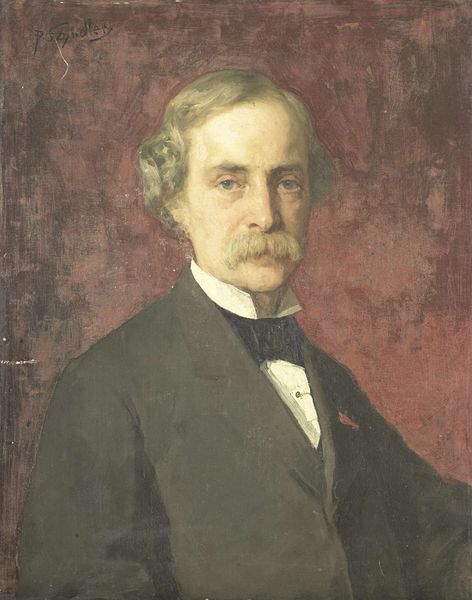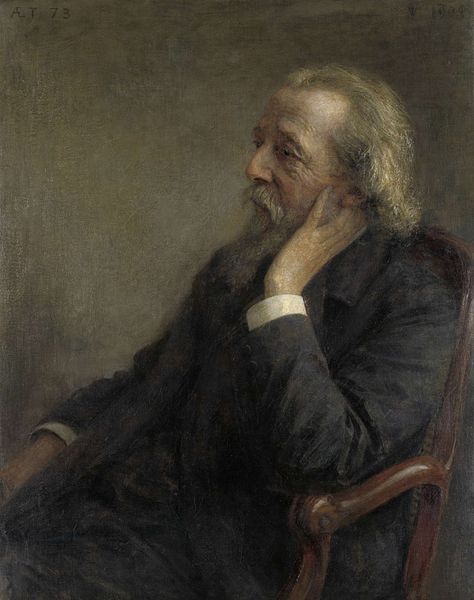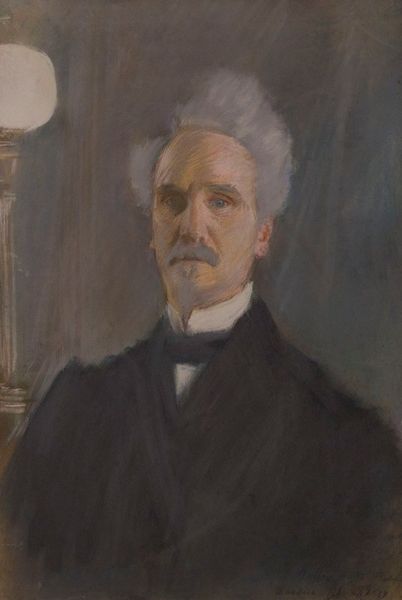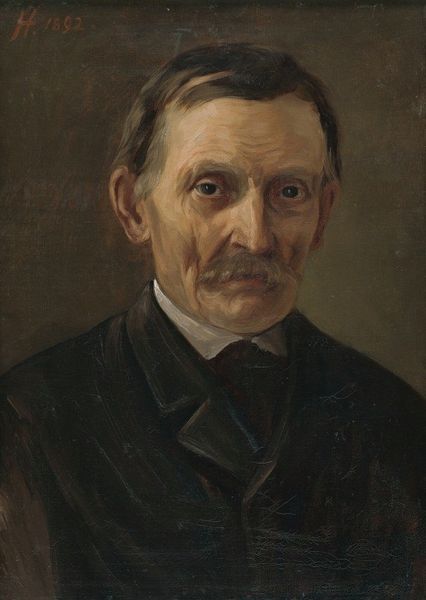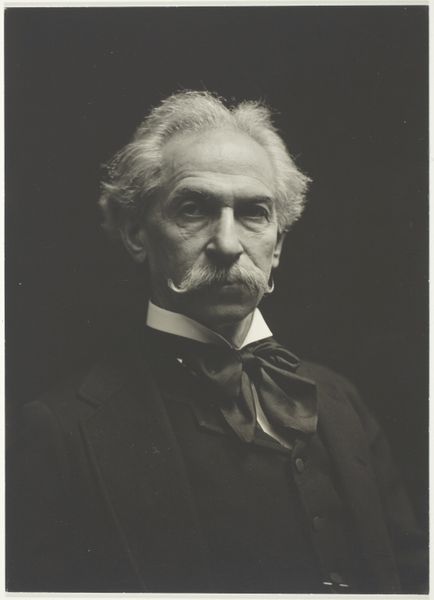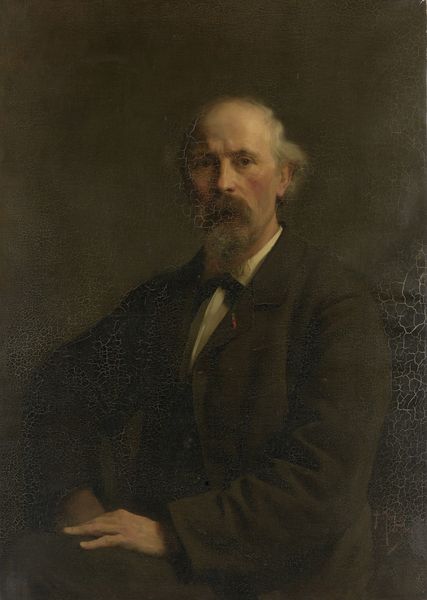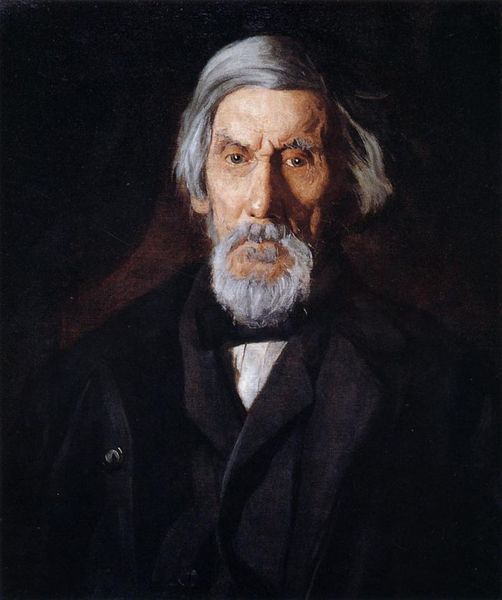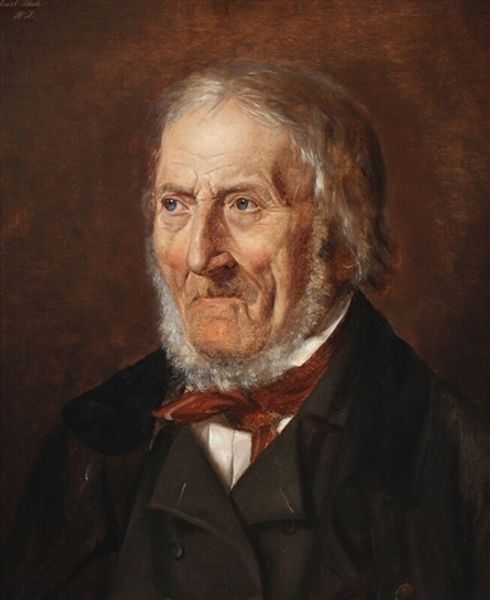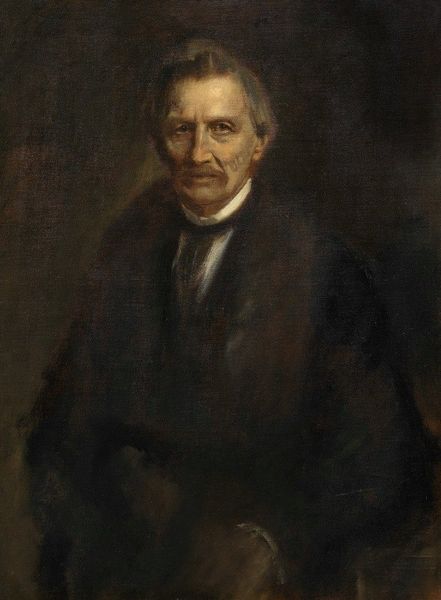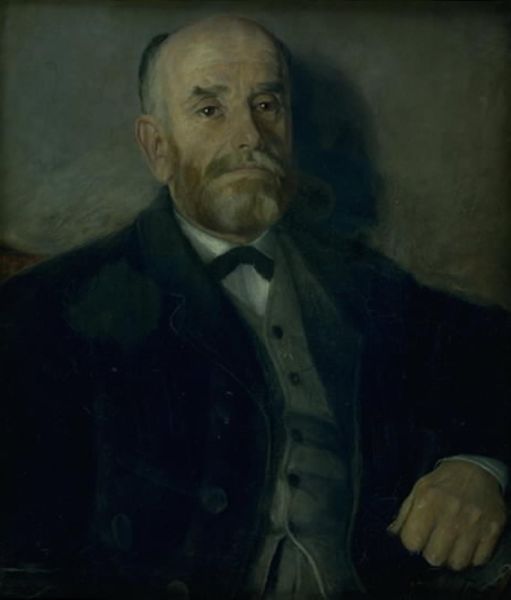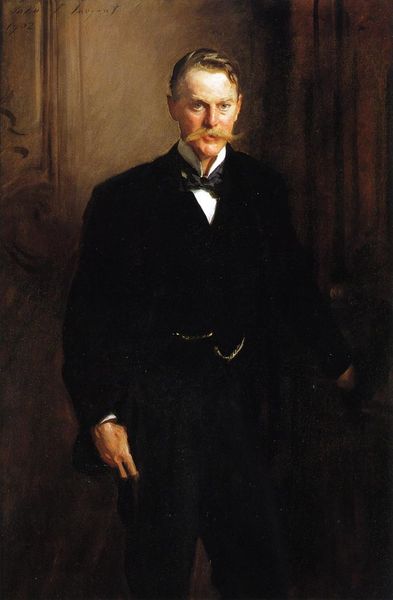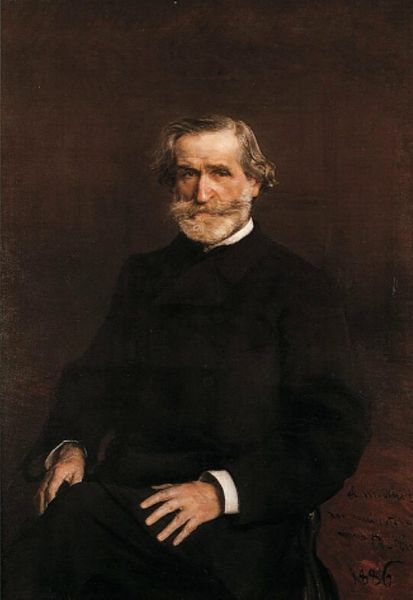
Copyright: Public Domain: Artvee
Editor: Here we have Jozef Israëls' oil on canvas, "Louis Jacques Veltman," painted in 1893. It feels like a very intimate, almost melancholic portrait, with such a muted palette. What stands out to you about the composition and application of paint in this work? Curator: The success of this portrait lies significantly in its tonal range and textural variety. Consider how the artist uses a limited color palette—primarily blacks, browns, and grays—to create depth. The rough impasto in the background contrasts with the smoother handling of paint on the face. What semiotic function might this serve? Editor: It does create an interesting contrast that really makes the face pop. It almost creates a narrative: what is known and knowable (face, smoothly painted) vs. that which we cannot grasp as easily. How would you expand upon that analysis? Curator: Precisely! Note how Israëls manipulates the viscosity of the paint to evoke differing sensorial perceptions. The palpable brushstrokes articulate form but also disrupt illusionism. The work proclaims itself as a painted surface, mediating between representation and material presence. What impact does that have? Editor: So it draws attention not just to what is portrayed but how it's being portrayed. What the medium offers is part of the message of the painting. Curator: Exactly. The materiality becomes intrinsically linked to the sitter. We understand this sitter better through brushstrokes. Editor: That’s insightful. So the brushstrokes, color choices, and the overall composition contribute to an understanding of the subject's essence rather than a simple likeness. Thanks for the clarification! Curator: The delight resides in discovering that it is through these formal qualities that content truly surfaces.
Comments
No comments
Be the first to comment and join the conversation on the ultimate creative platform.
